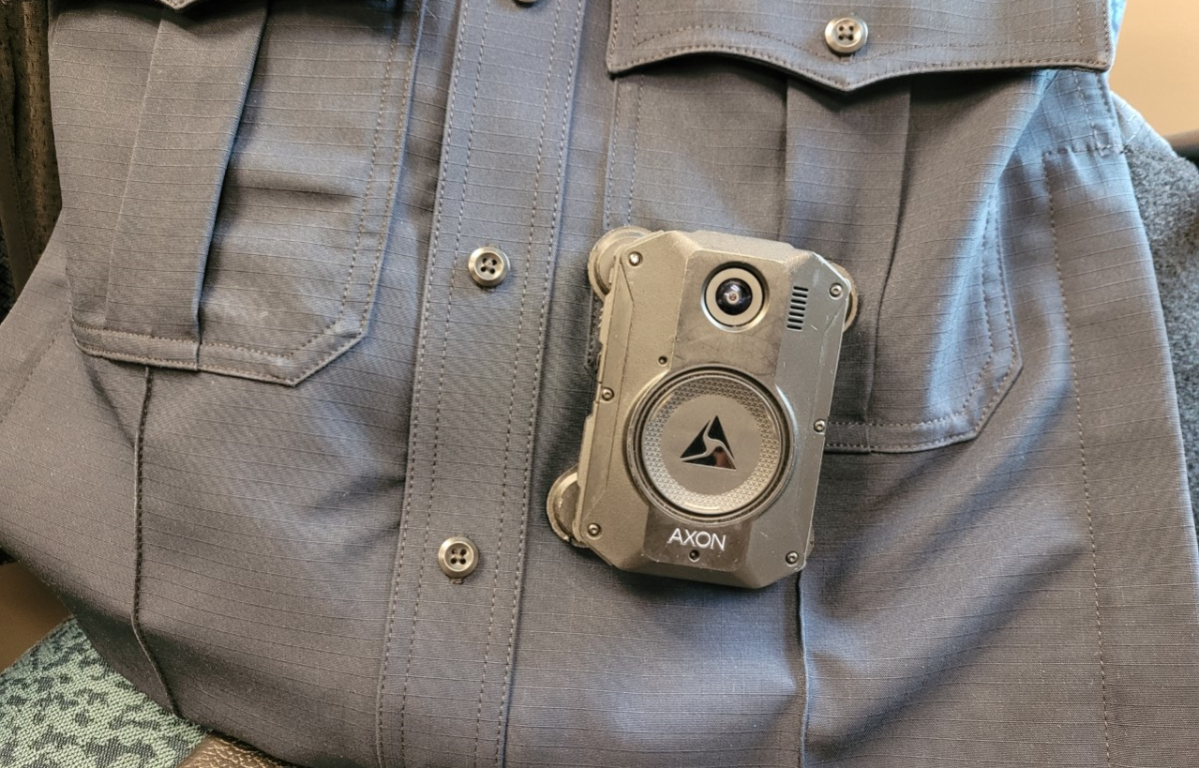CLARKSVILLE, TN (CLARKSVILLE NOW) – With the successful implementation of body cameras by the Clarksville Police Department, the Clarksville-Montgomery County School System is equipping a few School Resource Officers with body cameras as a pilot program, and sheriff’s deputies may be next.
Anthony Johnson, public information officer for CMCSS, said body-worn cameras for SROs were purchased using recurring Tennessee Safe Schools Act grant funding, which has been about $750,000.
“That funding is used for various safety, security, and social and emotional health initiatives for our schools, and expenditures are approved by the state,” Johnson said.
The Montgomery County Sheriff’s Office issued cameras to the SROs last year, said sheriff’s Lt. Mark Wojnarek. “We have not rolled them out yet agencywide. We have a couple of deputies testing them out.”
Sheriff’s Office considers cams
Wojnarek said the Sheriff’s Office is looking at equipping their field officers with cameras, if they can sort out some obstacles.
“I don’t know if we have worked out a provider that is going to be for us yet,” he said. “It is not really the quality of camera but how the data (on the camera) is stored that presents the issue.”
Wojnarek said funding for MCSO body cameras was requested in this year’s budget and approved by the Montgomery County Commission.
“While the sheriff’s department is not trailblazing in that area yet, the Clarksville Police Department is,” he said.

Police already fitted with body cams
Police Lt. Charles Gill said CPD received two grants from the Department of Justice for body cameras.
“We got a grant in 2017 that equipped 226 officers with body cameras, and one for the following year that equipped 76 officers,” he said.
Gill said there are only few officers without cameras, explaining the cameras are not issued to officers who don’t deal with the public.
Not long after the department rolled out the body cameras, Gill said, Mayor Joe Pitts approved the purchase of an additional system for patrol cars. “He wanted an in-car system that would work with body cameras,” he said.
“The body cam acts as a microphone with the car system,” he said, noting the system provides the public with complete transparency.
Although officers have the cameras on them for the entire duration of a 12-hour shift, Gill said recorded footage averages six to eight hours a day.

How the cameras work
“The cameras can record for 12 hours straight,” Gill said, noting that officers are not required to record continuously.
“Our policy is anytime there is a law enforcement encounter, the body camera is required to be activated,” he said. “If I am driving down the road and I have a call on a robbery, I have to turn on my body cam,” he said.
But if he is on duty and stops at the QuickMart, he does not have to turn on his camera.
“The camera just sits on the officer’s chest, and it’s a big black box that stays in standby mode. There is a big button on the front of it. You just push it, and it activates,” he said.
At the end of each shift, officers are required to classify each video on their phone or on the laptops in their patrol cars.
“Footage also automatically downloads from the police cars when officers are in range of the police station,” Gill said.
Gill said CPD likes having the body and car cameras. “I don’t see that many drawbacks,” he said. “It’s no longer their word against your word.”


